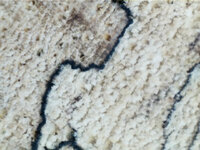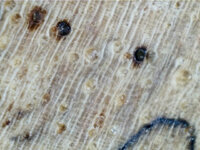MesquiteMan
Retired Head Moderator
I bought a USB micro-scope camera to play around with and decided to see what stabilized vs. unstabilized wood looks like at 200x magnification. The wood is spalted pecan and the pictures are taken of the end grain on a couple of cross cut blanks. Both blanks came from the same board and both were cut on the same 40 tooth Tenyru blade.
The first pic is unstabilized and the second is stabilized.


The first pic is unstabilized and the second is stabilized.
Attachments
Last edited:


